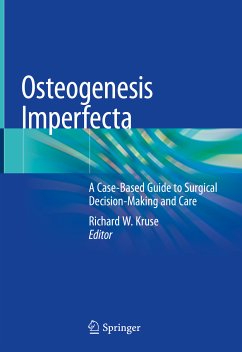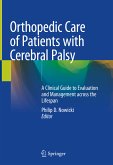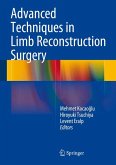Osteogenesis imperfecta (OI), also known as brittle bone disease, is a genetic disease involving primarily the skeleton but affecting all organ systems. It is an extremely multifarious condition causing frequent fractures and limb and spinal deformity, which can often be severe. While there are described surgical procedures to treat these patients, due to the variety of the deformities and the fragility of the bone, the orthopaedic surgeon is often forced to adapt or modify a plan during an operation to achieve success. Surgical experience with the disease worldwide is often limited and variable, and due to constraints on medical equipment and surgical implants in resource-constrained countries, alternate methods of achieving the similar surgical endpoints are possible.
Dieser Download kann aus rechtlichen Gründen nur mit Rechnungsadresse in A, B, BG, CY, CZ, D, DK, EW, E, FIN, F, GR, HR, H, IRL, I, LT, L, LR, M, NL, PL, P, R, S, SLO, SK ausgeliefert werden.
Es gelten unsere Allgemeinen Geschäftsbedingungen: www.buecher.de/agb
Impressum
www.buecher.de ist ein Internetauftritt der buecher.de internetstores GmbH
Geschäftsführung: Monica Sawhney | Roland Kölbl | Günter Hilger
Sitz der Gesellschaft: Batheyer Straße 115 - 117, 58099 Hagen
Postanschrift: Bürgermeister-Wegele-Str. 12, 86167 Augsburg
Amtsgericht Hagen HRB 13257
Steuernummer: 321/5800/1497
USt-IdNr: DE450055826
Bitte wählen Sie Ihr Anliegen aus.
Rechnungen
Retourenschein anfordern
Bestellstatus
Storno









